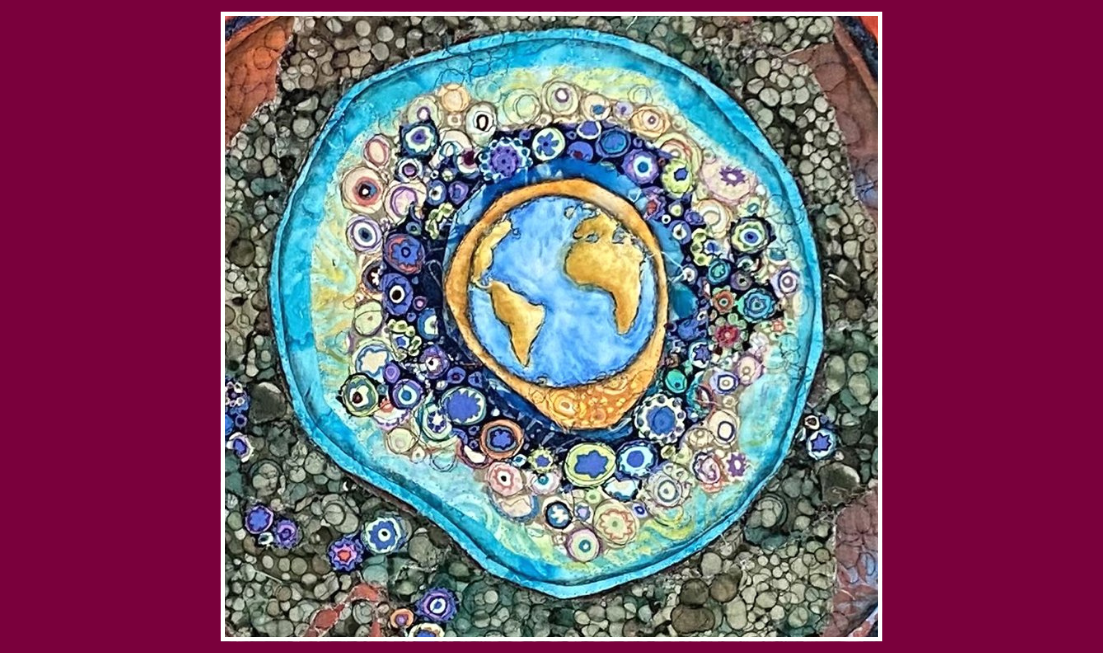L.R. Wilson Hall art exhibitions explore the relation between land and language

Lorraine Roy, detail from All the Words in the World
In Rick Monture’s grandparents’ time, roughly seven or eight languages were spoken at Six Nations of the Grand River.
Now, there are only three — Cayuga, Mohawk and Onondaga — and those are severely endangered, explains Monture, a professor in Indigenous Studies and in English and Cultural Studies.
In fact, Six Nations is the only place in the world where Cayuga is spoken, and while immersion programs are running and people are learning the language, there are now fewer than 20 people at Six Nations who were raised speaking it.
Raising awareness of endangered languages, and their relation to the land where they’re spoken, is the focus of two new exhibitions in L.R. Wilson Hall that will be celebrated on March 31 — National Indigenous Languages Day in Canada
The first is a new permanent work by Six Nations author, advocate and artist Courtney Skye, which will be unveiled on the wall opposite the L.R. Wilson Concert Hall.
The work, which is based on an ancient Haudenosaunee concept of the celestial tree, is a response to the Cayuga name for the area on Lower Lions’ Club Road in Ancaster also known as the McMaster Forest: Ne:toh ho: gyo’tgo:t egahado:do’k, which can be interpreted as “this place will always be a standing forest” or “this forest will always grow itself.”
“Cayuga is a very active language — verbs drive the whole grammar structure, and it’s kind of reflective of a world constantly in motion,” explains Monture, who helped facilitate Skye’s commission.
“Nothing is static, and everything has a relationship to something else. A forest is perpetually producing the things it needs to sustain itself — it doesn’t need any kind of human activity for it to continue.”
Running alongside Skye’s new work is Living-Language-Land: Word Portraits from the Earth, by Greensville textile artist Lorraine Roy.
The exhibition features 27 stitched works that were inspired by the Living-Language-Land project, an exploration of how minority and endangered languages around the world relate to land and nature.
Chris Sinding, a professor in the School of Social Work and in the department of Health, Aging and Society; and Susie O’Brien, a professor of English and Cultural Studies, both knew Roy and loved the idea of displaying her work — but wanted to make sure that the precarious nature of local First Nations’ languages was also highlighted.
“Living-Language-Land is a cool transnational project that was created in connection with COP26 – and we decided that we couldn’t showcase a project like that at McMaster and not make it be about this place as well,” says O’Brien.
“A name for something is not just a word — it’s a relation and a process. When we look at both Lorraine’s and Courtney’s work, we’re reminded that it’s not just words in a language that are endangered, but all the relations the words imply.”
Along with the efforts of Sinding, O’Brien and Monture, several units across campus have supported the exhibitions, including:
- Programs, schools and departments: Arts and Science; Communication Studies and Media Arts; Earth, Environment and Society; English and Cultural Studies; Globalization Studies; Health, Aging and Society; Indigenous Studies; Linguistics and Languages; the School of the Arts; the School of Social Work
- The Indigenous Priorities Fund
- Arts Operations, Resources & Production
- The offices of the deans in the Faculties of Humanities and Social Sciences
- The Office of the Provost and the Office of the President and Vice-Chancellor
To attend the unveiling of Courtney Skye’s new work as well as a reception for Word Portraits from the Earth on March 31 at 4 p.m., please register on Eventbrite. All are welcome, and the event is free.

